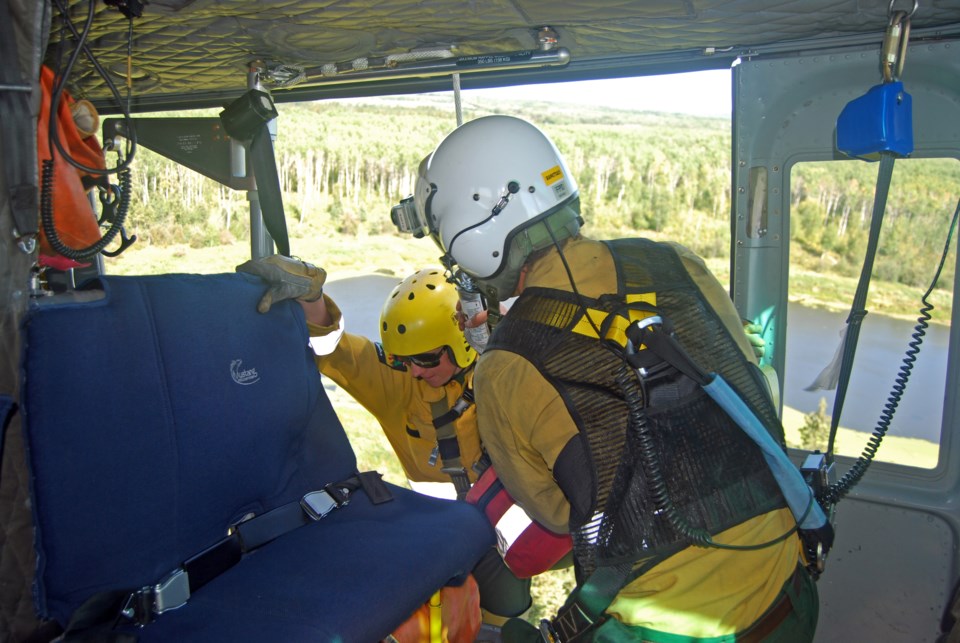There are hand signals for everything in rappel firefighting. There’ s even one that means, “I’ m stuck in a tree.” That’ s a very real possibility when you’ re rappelling down a line out of a helicopter to tackle a wildfire.
There are hand signals for everything in rappel firefighting. There’ s even one that means, “I’ m stuck in a tree.”
That’ s a very real possibility when you’ re rappelling down a line out of a helicopter to tackle a wildfire.
Rappel spotter Ben Bartlett is one of the rappel firefighters based in the Lac La Biche area this summer. He recalls the first time he dropped to the ground from a chopper during spring training in Hinton several years ago. He has a slight fear of heights, but all of the other elements in play overwhelmed that.
“The last thing on my mind was how high I was,” he said.
That carries over into actual rappel firefighting, he says. There’ s so much happening at once that altitude actually takes a backseat in your mind.
“You’ re so focused on the fire and everything else,” said Bartlett.
Of the eight people riding in the rappel squad helicopter, only three are harnessed and rappel-ready when the aircraft leaves the base on Highway 663. Once the crew arrives at the scene, they can drop down and start fighting the fire while three more crewmembers get ready to follow them.
The rappel spotter stays in the helicopter until it lands, making sure all of the other crewmembers make it the ground safely.
“I’ m the eyes in the sky with the pilot, watching the guys,” Bartlett said. “Every fire’ s different but if I can get on the ground and get my boots dirty, that’ s my favourite.”
The helicopter needs to stay at least 40 feet above the treetops when firefighters are “on the rope.” Otherwise, the wind from the rotors could fan the flames.
Once the chopper arrives at a wildfire, it takes around seven minutes for the entire crew to rappel to the ground if there aren’ t any complications. Landing the aircraft is preferable, Bartlett says, but sometimes that means the team’ s first job is clearing a makeshift helipad with chainsaws.
After that, it’ s business as usual-or as close to it as wildland firefighting ever gets. Sometimes, not all crewmembers need to battle the same blaze. There are fires known as “one-tree wonders” that don’ t require a full crew’ s attention.
Bartlett says there have been many of those in the Lac La Biche area this season.
“That happened quite a bit in June. We’ d land, drop a few guys off,” he said.
This fire season has also been a reminder of what grueling work wildland firefighting can be, he says. Since March 1, there have been well over 200 wildfires in the Lac La Biche Forest Protection Area.
Prospective firefighters get a taste of what they’ re in for during spring training in Hinton.
“The recruiting camp is physically and mentally exhausting,” Bartlett said. “You want to challenge (trainees) and make sure they can still rappel safely.”
It’ s intensely demanding but also incredibly rewarding, he says.
“After the boot camp you just become part of a really big family. I guess that’ s why people come back year after year, myself included,” he said.
Fire season lasts until Oct. 31.
